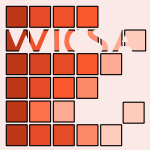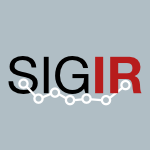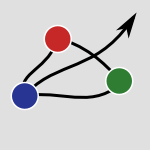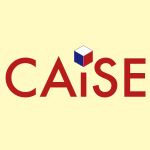109 papers:
 WICSA-2015-NaabBLHEMCK #architecture #case study #design #ecosystem #experience #mobile #prototype #scalability #why
WICSA-2015-NaabBLHEMCK #architecture #case study #design #ecosystem #experience #mobile #prototype #scalability #why- Why Data Needs more Attention in Architecture Design — Experiences from Prototyping a Large-Scale Mobile App Ecosystem (MN, SB, TL, SH, AE, DM, RC, FK), pp. 75–84.
 CHI-2015-KwonJBSBKS #interactive #named
CHI-2015-KwonJBSBKS #interactive #named- FugaciousFilm: Exploring Attentive Interaction with Ephemeral Material (HK, SJ, SB, SAS, PDB, BK, HS), pp. 1285–1294.
 CHI-2015-MariakakisGAPW #mobile #named #using
CHI-2015-MariakakisGAPW #mobile #named #using- SwitchBack: Using Focus and Saccade Tracking to Guide Users’ Attention for Mobile Task Resumption (AM, MG, MTIA, SNP, JOW), pp. 2953–2962.
 CHI-2015-NeateJE
CHI-2015-NeateJE- Mediating Attention for Second Screen Companion Content (TN, MJ, ME), pp. 3103–3106.
 HCI-IT-2015-CravenSGNSY #game studies #video
HCI-IT-2015-CravenSGNSY #game studies #video- Evaluating a Public Display Installation with Game and Video to Raise Awareness of Attention Deficit Hyperactivity Disorder (MPC, LS, AG, SN, HS, ZY), pp. 584–595.
 ICML-2015-XuBKCCSZB #generative #image #visual notation
ICML-2015-XuBKCCSZB #generative #image #visual notation- Show, Attend and Tell: Neural Image Caption Generation with Visual Attention (KX, JB, RK, KC, ACC, RS, RSZ, YB), pp. 2048–2057.
 KDD-2015-AntoineJWKA #twitter
KDD-2015-AntoineJWKA #twitter- Portraying Collective Spatial Attention in Twitter (ÉA, AJ, SW, YK, TA), pp. 39–48.
 SIGIR-2015-LagunA #interactive #modelling
SIGIR-2015-LagunA #interactive #modelling- Inferring Searcher Attention by Jointly Modeling User Interactions and Content Salience (DL, EA), pp. 483–492.
 DAC-2014-LinKH #mobile #power management
DAC-2014-LinKH #mobile #power management- Catch Your Attention: Quality-retaining Power Saving on Mobile OLED Displays (CHL, CKK, PCH), p. 6.
 CHI-2014-KizilcecPS #video #visual notation
CHI-2014-KizilcecPS #video #visual notation- Showing face in video instruction: effects on information retention, visual attention, and affect (RFK, KP, LS), pp. 2095–2102.
 CHI-2014-MarkICJ #online #process
CHI-2014-MarkICJ #online #process- Bored mondays and focused afternoons: the rhythm of attention and online activity in the workplace (GM, STI, MC, PJ), pp. 3025–3034.
 CHI-2014-PielotOKO #mobile #predict
CHI-2014-PielotOKO #mobile #predict- Didn’t you see my message?: predicting attentiveness to mobile instant messages (MP, RdO, HK, NO), pp. 3319–3328.
 DHM-2014-IkenoboKKTG #classification
DHM-2014-IkenoboKKTG #classification- The Classification Tendency and Common Denomination of the Points Paid Attention in Ikebana Instruction (YI, NK, NK, YT, AG), pp. 263–272.
 DUXU-ELAS-2014-FloraB #behaviour #energy #feedback #graph
DUXU-ELAS-2014-FloraB #behaviour #energy #feedback #graph- Energy Graph Feedback: Attention, Cognition and Behavior Intentions (JAF, BB), pp. 520–529.
 HCI-AS-2014-YoungCGC #metric #mobile #performance #physics #process
HCI-AS-2014-YoungCGC #metric #mobile #performance #physics #process- Snappy App: A Mobile Continuous Performance Test with Physical Activity Measurement for Assessing Attention Deficit Hyperactivity Disorder (ZY, MPC, MG, JC), pp. 363–373.
 LCT-NLE-2014-WachtlerE #algorithm #profiling
LCT-NLE-2014-WachtlerE #algorithm #profiling- Attention Profiling Algorithm for Video-Based Lectures (JW, ME), pp. 358–367.
 LCT-TRE-2014-OzcelikCSTU #education
LCT-TRE-2014-OzcelikCSTU #education- The Effect of Split Attention in Surgical Education (EÖ, NEÇ, GS, ET, BU), pp. 3–10.
 ICPR-2014-RazavianASC #smarttech #using
ICPR-2014-RazavianASC #smarttech #using- Estimating Attention in Exhibitions Using Wearable Cameras (ASR, OA, JS, SC), pp. 2691–2696.
 ICPR-2014-YamazakiHF #visual notation
ICPR-2014-YamazakiHF #visual notation- Sensing Visual Attention by Sequential Patterns (YY, HH, KF), pp. 483–488.
 SIGIR-2014-LagunA
SIGIR-2014-LagunA- Effects of task and domain on searcher attention (DL, EA), pp. 1087–1090.
 SIGIR-2014-LagunHWN #metric #mobile #towards
SIGIR-2014-LagunHWN #metric #mobile #towards- Towards better measurement of attention and satisfaction in mobile search (DL, CHH, DW, VN), pp. 113–122.
 SIGIR-2014-SmuckerGT
SIGIR-2014-SmuckerGT- Mouse movement during relevance judging: implications for determining user attention (MDS, XSG, AT), pp. 979–982.
 DAC-2013-ParkZDK #recognition
DAC-2013-ParkZDK #recognition- Accelerators for biologically-inspired attention and recognition (MSP, CZ, MD, SK), p. 6.
 HT-2013-RokhlenkoGLL #web
HT-2013-RokhlenkoGLL #web- Engagement-based user attention distribution on web article pages (OR, NG, RL, LL), pp. 196–201.
 CSCW-2013-KusunokiSZB #comprehension #monitoring #visual notation
CSCW-2013-KusunokiSZB #comprehension #monitoring #visual notation- Understanding visual attention of teams in dynamic medical settings through vital signs monitor use (DSK, AS, ZZ, RSB), pp. 527–540.
 DHM-SET-2013-BiegBC #behaviour #bias
DHM-SET-2013-BiegBC #behaviour #bias- Attentional Biases during Steering Behavior (HJB, HHB, LLC), pp. 21–27.
 HIMI-D-2013-DjamasbiPY13a #contest
HIMI-D-2013-DjamasbiPY13a #contest- Search Results Pages and Competition for Attention Theory: An Exploratory Eye-Tracking Study (SD, AHP, R(Y), pp. 576–583.
 SIGIR-2013-ZhaoGYHL #generative #social #timeline
SIGIR-2013-ZhaoGYHL #generative #social #timeline- Timeline generation with social attention (WXZ, YG, RY, YH, XL), pp. 1061–1064.
 CHI-2012-McCay-PeetLN #on the
CHI-2012-McCay-PeetLN #on the- On saliency, affect and focused attention (LMP, ML, VN), pp. 541–550.
 CHI-2012-SzafirM #adaptation #design #exclamation #monitoring
CHI-2012-SzafirM #adaptation #design #exclamation #monitoring- Pay attention!: designing adaptive agents that monitor and improve user engagement (DS, BM), pp. 11–20.
 ICPR-2012-HuG #3d #framework #gesture #modelling #recognition #visual notation
ICPR-2012-HuG #3d #framework #gesture #modelling #recognition #visual notation- A 3D gesture recognition framework based on hierarchical visual attention and perceptual organization models (GH, QG), pp. 1411–1414.
 ICPR-2012-HuLH #visual notation
ICPR-2012-HuLH #visual notation- Visual attention region determination for H.264 videos (KTH, JJL, HHH), pp. 2038–2041.
 ICPR-2012-PalenichkaPKL #image #modelling #multi #using
ICPR-2012-PalenichkaPKL #image #modelling #multi #using- Model-based extraction of image area descriptors using a multi-scale attention operator (RMP, MP, YK, AL), pp. 853–856.
 ICPR-2012-PotapovaZV #3d #segmentation
ICPR-2012-PotapovaZV #3d #segmentation- Attention-driven segmentation of cluttered 3D scenes (EP, MZ, MV), pp. 3610–3613.
 ICPR-2012-StammD #analysis #documentation
ICPR-2012-StammD #analysis #documentation- Searching attentive tasks with document analysis evidences and Dempster-Shafer theory (KS, AD), pp. 529–532.
 ICSE-2012-SillittiSV #case study #comprehension #developer #industrial #programming #scalability
ICSE-2012-SillittiSV #case study #comprehension #developer #industrial #programming #scalability- Understanding the impact of Pair Programming on developers attention: A case study on a large industrial experimentation (AS, GS, JV), pp. 1094–1101.
 CHI-2011-VeasMFS #memory management #visual notation
CHI-2011-VeasMFS #memory management #visual notation- Directing attention and influencing memory with visual saliency modulation (EEV, EM, SF, DS), pp. 1471–1480.
 CHI-2011-WainerDK #email
CHI-2011-WainerDK #email- Should I open this email?: inbox-level cues, curiosity and attention to email (JW, LD, RK), pp. 3439–3448.
 DHM-2011-MobusEG #composition #predict
DHM-2011-MobusEG #composition #predict- Predicting the Focus of Attention and Deficits in Situation Awareness with a Modular Hierarchical Bayesian Driver Model (CM, ME, HG), pp. 483–492.
 HCI-ITE-2011-BarbuceanuADR #analysis #artificial reality #interactive #user interface
HCI-ITE-2011-BarbuceanuADR #analysis #artificial reality #interactive #user interface- Attentive User Interface for Interaction within Virtual Reality Environments Based on Gaze Analysis (FB, CA, MD, ZR), pp. 204–213.
 HIMI-v1-2011-MitaWKM #case study #communication #using
HIMI-v1-2011-MitaWKM #case study #communication #using- A Study of Attention Control by Using Eye Communication with an Anthropomorphic Agent (TM, RW, NK, KM), pp. 603–611.
 CIKM-2011-LakkarajuA #predict #social #social media
CIKM-2011-LakkarajuA #predict #social #social media- Attention prediction on social media brand pages (HL, JA), pp. 2157–2160.
 ICML-2011-BazzaniFLMT #learning #network #policy #recognition #video
ICML-2011-BazzaniFLMT #learning #network #policy #recognition #video- Learning attentional policies for tracking and recognition in video with deep networks (LB, NdF, HL, VM, JAT), pp. 937–944.
 SIGIR-2011-CartrightWH #health
SIGIR-2011-CartrightWH #health- Intentions and attention in exploratory health search (MAC, RWW, EH), pp. 65–74.
 CHI-2010-IqbalJH
CHI-2010-IqbalJH- Cars, calls, and cognition: investigating driving and divided attention (STI, YCJ, EH), pp. 1281–1290.
 CHI-2010-JensenST #behaviour #navigation
CHI-2010-JensenST #behaviour #navigation- Studying driver attention and behaviour for three configurations of GPS navigation in real traffic driving (BSJ, MBS, NT), pp. 1271–1280.
 CHI-2010-KernMS #named #visual notation
CHI-2010-KernMS #named #visual notation- Gazemarks: gaze-based visual placeholders to ease attention switching (DK, PM, AS), pp. 2093–2102.
 ICPR-2010-LiHLYZL #recognition #top-down
ICPR-2010-LiHLYZL #recognition #top-down- Event Recognition Based on Top-Down Motion Attention (LL, WH, BL, CY, PZ, WL), pp. 3561–3564.
 ICPR-2010-SangWW #learning #modelling #top-down #visual notation
ICPR-2010-SangWW #learning #modelling #top-down #visual notation- A Biologically-Inspired Top-Down Learning Model Based on Visual Attention (NS, LW, YW), pp. 3736–3739.
 ICPR-2010-SunLS #approach #visual notation
ICPR-2010-SunLS #approach #visual notation- A Visual Attention Based Approach to Text Extraction (QS, YL, SS), pp. 3991–3995.
 ICPR-2010-ZhaoLLY #visual notation
ICPR-2010-ZhaoLLY #visual notation- Sparse Embedding Visual Attention Systems Combined with Edge Information (CZ, CL, ZL, JY), pp. 3432–3435.
 CHI-2009-YardiGB
CHI-2009-YardiGB- Blogging at work and the corporate attention economy (SY, SAG, MJB), pp. 2071–2080.
 DHM-2009-GoreHWS #implementation
DHM-2009-GoreHWS #implementation- A Computational Implementation of a Human Attention Guiding Mechanism in MIDAS v5 (BFG, BLH, CDW, SSN), pp. 237–246.
 HCI-NT-2009-Rebolledo-MendezDMVFLG #assessment #detection #usability
HCI-NT-2009-Rebolledo-MendezDMVFLG #assessment #detection #usability- Assessing NeuroSky’s Usability to Detect Attention Levels in an Assessment Exercise (GRM, ID, EMM, MDVC, SdF, FL, ARGG), pp. 149–158.
 HCI-NT-2009-SrinivasanTDLD
HCI-NT-2009-SrinivasanTDLD- Decoding Attentional Orientation from EEG Spectra (RS, ST, SD, TL, MD), pp. 176–183.
 HCI-VAD-2009-FicarraC #hypermedia #motivation
HCI-VAD-2009-FicarraC #hypermedia #motivation- Attention and Motivation in Hypermedia Systems (FVCF, MCF), pp. 78–87.
 IDGD-2009-TranL #interface #question #research
IDGD-2009-TranL #interface #question #research- Attention to Effects of Different Cross-Cultural Levels in User Research Method’s Interface: Discipline or Nationality — Which Has Stronger Force? (TTT, KPL), pp. 127–134.
 SAC-2009-HeinenE #2d #evaluation #modelling #similarity #visual notation
SAC-2009-HeinenE #2d #evaluation #modelling #similarity #visual notation- Evaluation of visual attention models under 2D similarity transformations (MRH, PME), pp. 1156–1160.
 SAC-2009-MullerK #interactive #visual notation
SAC-2009-MullerK #interactive #visual notation- Attention driven visual processing for an interactive dialog robot (TM, AK), pp. 1151–1155.
 CHI-2008-BirnholtzMGB #distributed
CHI-2008-BirnholtzMGB #distributed- Attention by proxy? issues in audience awareness for webcasts to distributed groups (JPB, CM, SG, RB), pp. 103–106.
 CSCW-2008-JuhlinW #collaboration
CSCW-2008-JuhlinW #collaboration- Hunting for fun: solitude and attentiveness in collaboration (OJ, AW), pp. 57–66.
 CAiSE-2008-YeNY #comprehension
CAiSE-2008-YeNY #comprehension- Understanding and Improving Collective Attention Economy for Expertise Sharing (YY, KN, YY), pp. 167–181.
 CIKM-2008-WangZRM #automation #online #ranking #topic #using
CIKM-2008-WangZRM #automation #online #ranking #topic #using- Automatic online news topic ranking using media focus and user attention based on aging theory (CW, MZ, LR, SM), pp. 1033–1042.
 ICPR-2008-Boccignone #analysis #parametricity #video
ICPR-2008-Boccignone #analysis #parametricity #video- Nonparametric Bayesian attentive video analysis (GB), pp. 1–4.
 ICPR-2008-ChamaretM #using #validation #video
ICPR-2008-ChamaretM #using #validation #video- Attention-based video reframing: Validation using eye-tracking (CC, OLM), pp. 1–4.
 ICPR-2008-KimuraPTYK #markov #modelling #probability #random #visual notation
ICPR-2008-KimuraPTYK #markov #modelling #probability #random #visual notation- Dynamic Markov random fields for stochastic modeling of visual attention (AK, DP, TT, JY, KK), pp. 1–5.
 ICPR-2008-LiuZDY #detection #learning #sequence #video
ICPR-2008-LiuZDY #detection #learning #sequence #video- Video attention: Learning to detect a salient object sequence (TL, NZ, WD, ZY), pp. 1–4.
 ICPR-2008-MilanovaRKTK #sequence #video #visual notation
ICPR-2008-MilanovaRKTK #sequence #video #visual notation- Combined visual attention model for video sequences (MGM, SHR, RK, VT, RK), pp. 1–4.
 CASE-2007-SugiMTOA #evaluation
CASE-2007-SugiMTOA #evaluation- Quantitative Evaluation of Human Supporting Production System “Attentive Workbench” (MS, IM, YT, JO, TA), pp. 531–535.
 CHI-2007-GluckBM
CHI-2007-GluckBM- Matching attentional draw with utility in interruption (JG, AB, JM), pp. 41–50.
 CHI-2007-VasalouJP #online #self
CHI-2007-VasalouJP #online #self- Constructing my online self: avatars that increase self-focused attention (AV, ANJ, JP), pp. 445–448.
 DHM-2007-WangYLLT #human-computer #interface
DHM-2007-WangYLLT #human-computer #interface- Brain-Computer Interfaces Based on Attention and Complex Mental Tasks (JW, NY, HL, ML, CT), pp. 467–473.
 HCI-IPT-2007-ChenK
HCI-IPT-2007-ChenK- Displays Attentive to Unattended Regions: Presenting Information in a Peripheral-Vision-Friendly Way (MCC, RLK), pp. 23–31.
 HCI-IPT-2007-NoguchiMS #embedded
HCI-IPT-2007-NoguchiMS #embedded- Attentive Information Support with Massive Embedded Sensors in Room (HN, TM, TS), pp. 883–892.
 HCI-MIE-2007-ReiterJ #quality #requirements
HCI-MIE-2007-ReiterJ #quality #requirements- Watch, Press, and Catch — Impact of Divided Attention on Requirements of Audiovisual Quality (UR, SJP), pp. 943–952.
 SIGIR-2007-Buscher #information retrieval
SIGIR-2007-Buscher #information retrieval- Attention-based information retrieval (GB), p. 918.
 CHI-2006-BioccaTOX #3d #artificial reality #mobile
CHI-2006-BioccaTOX #3d #artificial reality #mobile- Attention funnel: omnidirectional 3D cursor for mobile augmented reality platforms (FB, AT, CBO, FX), pp. 1115–1122.
 ICPR-v1-2006-BurTOSH #navigation
ICPR-v1-2006-BurTOSH #navigation- Robot Navigation by Panoramic Vision and Attention Guided Fetaures (AB, AT, NO, RS, HH), pp. 695–698.
 ICPR-v2-2006-FrintropJC
ICPR-v2-2006-FrintropJC- Pay Attention When Selecting Features (SF, PJ, HIC), pp. 163–166.
 ICPR-v4-2006-MbonyeF #estimation #parametricity #visual notation
ICPR-v4-2006-MbonyeF #estimation #parametricity #visual notation- Attentive Visual Servoing in the MPEG compressed domain for Un-calibrated Motion Parameter Estimation of Road Traffic (KPM, FPF), pp. 908–911.
 ICPR-v4-2006-TokaiH #layout #multi #navigation
ICPR-v4-2006-TokaiH #layout #multi #navigation- Attention Navigation by Keeping Screen Layout for Switching Multiple Views (ST, HH), pp. 766–769.
 CHI-2005-KhanMFK #named #scalability
CHI-2005-KhanMFK #named #scalability- Spotlight: directing users’ attention on large displays (AK, JM, GWF, GK), pp. 791–798.
 CHI-2005-OulasvirtaTRK #human-computer #interactive #mobile
CHI-2005-OulasvirtaTRK #human-computer #interactive #mobile- Interaction in 4-second bursts: the fragmented nature of attentional resources in mobile HCI (AO, ST, VR, JK), pp. 919–928.
 ICML-2005-PalettaFS #recognition #visual notation
ICML-2005-PalettaFS #recognition #visual notation- Q-learning of sequential attention for visual object recognition from informative local descriptors (LP, GF, CS), pp. 649–656.
 CSCW-2004-McCarthyBCGLZ #physics
CSCW-2004-McCarthyBCGLZ #physics- Digital backchannels in shared physical spaces: attention, intention and contention (JFM, DB, EFC, WGG, EL, MZ), pp. 550–553.
 ICPR-v3-2004-BoccignoneCMP #segmentation #using #video
ICPR-v3-2004-BoccignoneCMP #segmentation #using #video- Using Attention for Video Segmentation (GB, AC, VM, AP), pp. 838–841.
 ICPR-v3-2004-Stentiford #image #visual notation
ICPR-v3-2004-Stentiford #image #visual notation- A Visual Attention Estimator Applied to Image Subject Enhancement and Colour and Grey Level Compression (FS), pp. 638–641.
 ICPR-v4-2004-OyekoyaS #behaviour #using #visual notation
ICPR-v4-2004-OyekoyaS #behaviour #using #visual notation- Exploring Human Eye Behaviour using a Model of Visual Attention (OO, FS), pp. 945–948.
 CSCW-2002-KrautMTFCS #email #question
CSCW-2002-KrautMTFCS #email #question- Markets for attention: will postage for email help? (REK, JM, RT, DF, MC, SS), pp. 206–215.
 ITiCSE-2001-Kaczmarczyk #assessment #distance #education #student #why
ITiCSE-2001-Kaczmarczyk #assessment #distance #education #student #why- Accreditation and student assessment in distance education: why we all need to pay attention (LCK), pp. 113–116.
 CSCW-2000-Thorngate #how
CSCW-2000-Thorngate #how- Got a minute? How technology affects the economy of attention (WT), p. 361.
 ICPR-v1-2000-GolovanYL #detection #image
ICPR-v1-2000-GolovanYL #detection #image- Pre-Attentive Detection of Perceptually Important Regions in Facial Images (AG, MHY, SWL), pp. 5092–5095.
 ICPR-v1-2000-OuerhaniH #visual notation
ICPR-v1-2000-OuerhaniH #visual notation- Computing Visual Attention from Scene Depth (NO, HH), pp. 1375–1378.
 ICPR-v4-2000-Kita #visual notation
ICPR-v4-2000-Kita #visual notation- Visual Attention Control for Nuclear Power Plant Inspection (NK), pp. 4118–4123.
 ICPR-v4-2000-MaderlechnerSS #documentation #image #metric #using #visual notation
ICPR-v4-2000-MaderlechnerSS #documentation #image #metric #using #visual notation- Extraction of Relevant Information from Document Images Using Measures of Visual Attention (GM, AS, PS), pp. 4385–4388.
 ICPR-v4-2000-NakamuraOO #process
ICPR-v4-2000-NakamuraOO #process- Structuring Personal Activity Records Based on Attention — Analyzing Videos from Head-Mounted Camera (YN, YO, JO), pp. 4222–4225.
 ICDAR-1999-Faure #analysis #documentation #image
ICDAR-1999-Faure #analysis #documentation #image- Preattentive Reading and Selective Attention for Document Image Analysis (CF), pp. 577–580.
 CHI-1999-Vertegaal #collaboration #communication #multi
CHI-1999-Vertegaal #collaboration #communication #multi- The GAZE Groupware System: Mediating Joint Attention in Multiparty Communication and Collaboration (RV), pp. 294–301.
 ICPR-1998-ExelP #recognition #visual notation
ICPR-1998-ExelP #recognition #visual notation- Attentive visual recognition (SE, LP), pp. 690–692.
 ICPR-1998-HanKKL #network #probability #segmentation
ICPR-1998-HanKKL #network #probability #segmentation- Temporal segmentation and selective attention in the stochastic oscillator neural network (SKH, WSK, HK, SWL), pp. 259–261.
 ICPR-1998-TanakaHMK #detection
ICPR-1998-TanakaHMK #detection- Dynamic attention map by Ising model for human face detection (MT, KH, TM, TK), pp. 1044–1046.
 SAC-1998-HashemiTTSP #approach #development #network
SAC-1998-HashemiTTSP #approach #development #network- The development of profiles for children with attention deficit disorder and monkeys: a neural network approach (RRH, MST, AAT, WS, MGP), pp. 55–59.
 KDD-1997-StoughB #image #multi #reduction
KDD-1997-StoughB #image #multi #reduction- Image Feature Reduction through Spoiling: Its Application to Multiple Matched Filters for Focus of Attention (TMS, CEB), pp. 255–258.
 ICML-1996-BanderaVBHB #visual notation
ICML-1996-BanderaVBHB #visual notation- Residual Q-Learning Applied to Visual Attention (CB, FJV, JMB, MEH, LCBI), pp. 20–27.
 ICPR-1996-FellenzH #visual notation
ICPR-1996-FellenzH #visual notation- Preattentive grouping and attentive selection for early visual computation (WAF, GH), pp. 340–345.
 ICPR-1996-MakiNE
ICPR-1996-MakiNE- A computational model of depth-based attention (AM, PN, JOE), pp. 734–739.
 ICPR-1996-TakacsW #detection #using
ICPR-1996-TakacsW #detection #using- Attention and pattern detection using sensory and reactive control mechanisms (BT, HW), pp. 19–23.
 CHI-1995-HarrisonIVB #design #evaluation #user interface
CHI-1995-HarrisonIVB #design #evaluation #user interface- Transparent Layered User Interfaces: An Evaluation of a Display Design to Enhance Focused and Divided Attention (BLH, HI, KJV, WB), pp. 317–324.
 HCI-SHI-1993-Sato #collaboration #design #development
HCI-SHI-1993-Sato #collaboration #design #development- Human Centred Collaborative Design in System Development — Intelligent Back Scratcher to be Attentive to User’s Needs (YS), pp. 949–954.
 WICSA-2015-NaabBLHEMCK #architecture #case study #design #ecosystem #experience #mobile #prototype #scalability #why
WICSA-2015-NaabBLHEMCK #architecture #case study #design #ecosystem #experience #mobile #prototype #scalability #why CHI-2015-KwonJBSBKS #interactive #named
CHI-2015-KwonJBSBKS #interactive #named CHI-2015-MariakakisGAPW #mobile #named #using
CHI-2015-MariakakisGAPW #mobile #named #using CHI-2015-NeateJE
CHI-2015-NeateJE HCI-IT-2015-CravenSGNSY #game studies #video
HCI-IT-2015-CravenSGNSY #game studies #video ICML-2015-XuBKCCSZB #generative #image #visual notation
ICML-2015-XuBKCCSZB #generative #image #visual notation KDD-2015-AntoineJWKA #twitter
KDD-2015-AntoineJWKA #twitter SIGIR-2015-LagunA #interactive #modelling
SIGIR-2015-LagunA #interactive #modelling DAC-2014-LinKH #mobile #power management
DAC-2014-LinKH #mobile #power management CHI-2014-KizilcecPS #video #visual notation
CHI-2014-KizilcecPS #video #visual notation CHI-2014-MarkICJ #online #process
CHI-2014-MarkICJ #online #process CHI-2014-PielotOKO #mobile #predict
CHI-2014-PielotOKO #mobile #predict DHM-2014-IkenoboKKTG #classification
DHM-2014-IkenoboKKTG #classification DUXU-ELAS-2014-FloraB #behaviour #energy #feedback #graph
DUXU-ELAS-2014-FloraB #behaviour #energy #feedback #graph HCI-AS-2014-YoungCGC #metric #mobile #performance #physics #process
HCI-AS-2014-YoungCGC #metric #mobile #performance #physics #process LCT-NLE-2014-WachtlerE #algorithm #profiling
LCT-NLE-2014-WachtlerE #algorithm #profiling LCT-TRE-2014-OzcelikCSTU #education
LCT-TRE-2014-OzcelikCSTU #education ICPR-2014-RazavianASC #smarttech #using
ICPR-2014-RazavianASC #smarttech #using ICPR-2014-YamazakiHF #visual notation
ICPR-2014-YamazakiHF #visual notation SIGIR-2014-LagunA
SIGIR-2014-LagunA SIGIR-2014-LagunHWN #metric #mobile #towards
SIGIR-2014-LagunHWN #metric #mobile #towards SIGIR-2014-SmuckerGT
SIGIR-2014-SmuckerGT DAC-2013-ParkZDK #recognition
DAC-2013-ParkZDK #recognition HT-2013-RokhlenkoGLL #web
HT-2013-RokhlenkoGLL #web CSCW-2013-KusunokiSZB #comprehension #monitoring #visual notation
CSCW-2013-KusunokiSZB #comprehension #monitoring #visual notation DHM-SET-2013-BiegBC #behaviour #bias
DHM-SET-2013-BiegBC #behaviour #bias HIMI-D-2013-DjamasbiPY13a #contest
HIMI-D-2013-DjamasbiPY13a #contest SIGIR-2013-ZhaoGYHL #generative #social #timeline
SIGIR-2013-ZhaoGYHL #generative #social #timeline CHI-2012-McCay-PeetLN #on the
CHI-2012-McCay-PeetLN #on the CHI-2012-SzafirM #adaptation #design #exclamation #monitoring
CHI-2012-SzafirM #adaptation #design #exclamation #monitoring ICPR-2012-HuG #3d #framework #gesture #modelling #recognition #visual notation
ICPR-2012-HuG #3d #framework #gesture #modelling #recognition #visual notation ICPR-2012-HuLH #visual notation
ICPR-2012-HuLH #visual notation ICPR-2012-PalenichkaPKL #image #modelling #multi #using
ICPR-2012-PalenichkaPKL #image #modelling #multi #using ICPR-2012-PotapovaZV #3d #segmentation
ICPR-2012-PotapovaZV #3d #segmentation ICPR-2012-StammD #analysis #documentation
ICPR-2012-StammD #analysis #documentation ICSE-2012-SillittiSV #case study #comprehension #developer #industrial #programming #scalability
ICSE-2012-SillittiSV #case study #comprehension #developer #industrial #programming #scalability CHI-2011-VeasMFS #memory management #visual notation
CHI-2011-VeasMFS #memory management #visual notation CHI-2011-WainerDK #email
CHI-2011-WainerDK #email DHM-2011-MobusEG #composition #predict
DHM-2011-MobusEG #composition #predict HCI-ITE-2011-BarbuceanuADR #analysis #artificial reality #interactive #user interface
HCI-ITE-2011-BarbuceanuADR #analysis #artificial reality #interactive #user interface HIMI-v1-2011-MitaWKM #case study #communication #using
HIMI-v1-2011-MitaWKM #case study #communication #using CIKM-2011-LakkarajuA #predict #social #social media
CIKM-2011-LakkarajuA #predict #social #social media ICML-2011-BazzaniFLMT #learning #network #policy #recognition #video
ICML-2011-BazzaniFLMT #learning #network #policy #recognition #video SIGIR-2011-CartrightWH #health
SIGIR-2011-CartrightWH #health CHI-2010-IqbalJH
CHI-2010-IqbalJH CHI-2010-JensenST #behaviour #navigation
CHI-2010-JensenST #behaviour #navigation CHI-2010-KernMS #named #visual notation
CHI-2010-KernMS #named #visual notation ICPR-2010-LiHLYZL #recognition #top-down
ICPR-2010-LiHLYZL #recognition #top-down ICPR-2010-SangWW #learning #modelling #top-down #visual notation
ICPR-2010-SangWW #learning #modelling #top-down #visual notation ICPR-2010-SunLS #approach #visual notation
ICPR-2010-SunLS #approach #visual notation ICPR-2010-ZhaoLLY #visual notation
ICPR-2010-ZhaoLLY #visual notation CHI-2009-YardiGB
CHI-2009-YardiGB DHM-2009-GoreHWS #implementation
DHM-2009-GoreHWS #implementation HCI-NT-2009-Rebolledo-MendezDMVFLG #assessment #detection #usability
HCI-NT-2009-Rebolledo-MendezDMVFLG #assessment #detection #usability HCI-NT-2009-SrinivasanTDLD
HCI-NT-2009-SrinivasanTDLD HCI-VAD-2009-FicarraC #hypermedia #motivation
HCI-VAD-2009-FicarraC #hypermedia #motivation IDGD-2009-TranL #interface #question #research
IDGD-2009-TranL #interface #question #research SAC-2009-HeinenE #2d #evaluation #modelling #similarity #visual notation
SAC-2009-HeinenE #2d #evaluation #modelling #similarity #visual notation SAC-2009-MullerK #interactive #visual notation
SAC-2009-MullerK #interactive #visual notation CHI-2008-BirnholtzMGB #distributed
CHI-2008-BirnholtzMGB #distributed CSCW-2008-JuhlinW #collaboration
CSCW-2008-JuhlinW #collaboration CAiSE-2008-YeNY #comprehension
CAiSE-2008-YeNY #comprehension CIKM-2008-WangZRM #automation #online #ranking #topic #using
CIKM-2008-WangZRM #automation #online #ranking #topic #using ICPR-2008-Boccignone #analysis #parametricity #video
ICPR-2008-Boccignone #analysis #parametricity #video ICPR-2008-ChamaretM #using #validation #video
ICPR-2008-ChamaretM #using #validation #video ICPR-2008-KimuraPTYK #markov #modelling #probability #random #visual notation
ICPR-2008-KimuraPTYK #markov #modelling #probability #random #visual notation ICPR-2008-LiuZDY #detection #learning #sequence #video
ICPR-2008-LiuZDY #detection #learning #sequence #video ICPR-2008-MilanovaRKTK #sequence #video #visual notation
ICPR-2008-MilanovaRKTK #sequence #video #visual notation CASE-2007-SugiMTOA #evaluation
CASE-2007-SugiMTOA #evaluation CHI-2007-GluckBM
CHI-2007-GluckBM CHI-2007-VasalouJP #online #self
CHI-2007-VasalouJP #online #self DHM-2007-WangYLLT #human-computer #interface
DHM-2007-WangYLLT #human-computer #interface HCI-IPT-2007-ChenK
HCI-IPT-2007-ChenK HCI-IPT-2007-NoguchiMS #embedded
HCI-IPT-2007-NoguchiMS #embedded HCI-MIE-2007-ReiterJ #quality #requirements
HCI-MIE-2007-ReiterJ #quality #requirements SIGIR-2007-Buscher #information retrieval
SIGIR-2007-Buscher #information retrieval CHI-2006-BioccaTOX #3d #artificial reality #mobile
CHI-2006-BioccaTOX #3d #artificial reality #mobile ICPR-v1-2006-BurTOSH #navigation
ICPR-v1-2006-BurTOSH #navigation ICPR-v2-2006-FrintropJC
ICPR-v2-2006-FrintropJC ICPR-v4-2006-MbonyeF #estimation #parametricity #visual notation
ICPR-v4-2006-MbonyeF #estimation #parametricity #visual notation ICPR-v4-2006-TokaiH #layout #multi #navigation
ICPR-v4-2006-TokaiH #layout #multi #navigation CHI-2005-KhanMFK #named #scalability
CHI-2005-KhanMFK #named #scalability CHI-2005-OulasvirtaTRK #human-computer #interactive #mobile
CHI-2005-OulasvirtaTRK #human-computer #interactive #mobile ICML-2005-PalettaFS #recognition #visual notation
ICML-2005-PalettaFS #recognition #visual notation CSCW-2004-McCarthyBCGLZ #physics
CSCW-2004-McCarthyBCGLZ #physics ICPR-v3-2004-BoccignoneCMP #segmentation #using #video
ICPR-v3-2004-BoccignoneCMP #segmentation #using #video ICPR-v3-2004-Stentiford #image #visual notation
ICPR-v3-2004-Stentiford #image #visual notation ICPR-v4-2004-OyekoyaS #behaviour #using #visual notation
ICPR-v4-2004-OyekoyaS #behaviour #using #visual notation CSCW-2002-KrautMTFCS #email #question
CSCW-2002-KrautMTFCS #email #question ITiCSE-2001-Kaczmarczyk #assessment #distance #education #student #why
ITiCSE-2001-Kaczmarczyk #assessment #distance #education #student #why CSCW-2000-Thorngate #how
CSCW-2000-Thorngate #how ICPR-v1-2000-GolovanYL #detection #image
ICPR-v1-2000-GolovanYL #detection #image ICPR-v1-2000-OuerhaniH #visual notation
ICPR-v1-2000-OuerhaniH #visual notation ICPR-v4-2000-Kita #visual notation
ICPR-v4-2000-Kita #visual notation ICPR-v4-2000-MaderlechnerSS #documentation #image #metric #using #visual notation
ICPR-v4-2000-MaderlechnerSS #documentation #image #metric #using #visual notation ICPR-v4-2000-NakamuraOO #process
ICPR-v4-2000-NakamuraOO #process ICDAR-1999-Faure #analysis #documentation #image
ICDAR-1999-Faure #analysis #documentation #image CHI-1999-Vertegaal #collaboration #communication #multi
CHI-1999-Vertegaal #collaboration #communication #multi ICPR-1998-ExelP #recognition #visual notation
ICPR-1998-ExelP #recognition #visual notation ICPR-1998-HanKKL #network #probability #segmentation
ICPR-1998-HanKKL #network #probability #segmentation ICPR-1998-TanakaHMK #detection
ICPR-1998-TanakaHMK #detection SAC-1998-HashemiTTSP #approach #development #network
SAC-1998-HashemiTTSP #approach #development #network KDD-1997-StoughB #image #multi #reduction
KDD-1997-StoughB #image #multi #reduction ICML-1996-BanderaVBHB #visual notation
ICML-1996-BanderaVBHB #visual notation ICPR-1996-FellenzH #visual notation
ICPR-1996-FellenzH #visual notation ICPR-1996-MakiNE
ICPR-1996-MakiNE ICPR-1996-TakacsW #detection #using
ICPR-1996-TakacsW #detection #using CHI-1995-HarrisonIVB #design #evaluation #user interface
CHI-1995-HarrisonIVB #design #evaluation #user interface HCI-SHI-1993-Sato #collaboration #design #development
HCI-SHI-1993-Sato #collaboration #design #development









